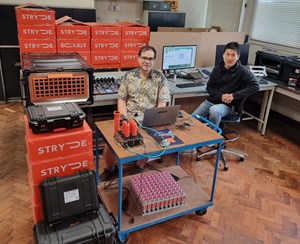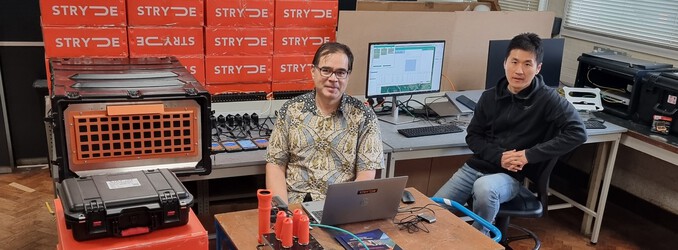STRYDE has announced the sale of multiple Mini Seismic Systems, including ~2,000 nodes, to support a groundbreaking new initiative in UK academic research. This investment, led by the University of Cambridge and backed by six other leading institutions, will make nodal seismic imaging technology widely accessible to the UK science community for the first time.

The new equipment will form a national technology pool, hosted by the University of Cambridge, and will be made available to researchers from the University of Newcastle, the University of East Anglia, the University of Edinburgh, the University of Oxford, Birkbeck and the NERC British Antarctic Survey. This initiative represents a major advance in the capabilities of UK-based passive seismology, opening the door to state-of-the-art large-N seismic surveys across a wide range of scientific disciplines.
Over the past decade, compact, cable-free and cost-effective seismic recording technology has revolutionized global seismology by enabling the deployment of thousands of sensors in high-density configurations. These “large-N” arrays deliver unparalleled resolution of the Earth’s seismic wavefield, yet until now, this technology has been largely inaccessible to UK researchers due to the high costs of sporadic leasing of equipment.
The establishment of this node pool, equipped with STRYDE’s Mini Seismic Systems, directly addresses this gap, offering researchers an affordable solution for high-density seismic acquisition. The systems will support a broad spectrum of research aligned with the UK’s Natural Environment Research Council (NERC) remit, including:
Geothermal energy and carbon capture and storage monitoring
Earthquake and volcano hazard assessment
Landslide and environmental seismology
Ice sheet monitoring in climate change research
Urban seismic studies
Geotechnical and civil engineering
“This equipment dramatically increases the speed and agility with which we can deploy large-N seismic arrays, while delivering a step-change in data resolution and image quality. It will open the door to ambitious, high-impact research projects that were previously logistically or financially unfeasible and will help position the UK at the forefront of innovation in seismic imaging.” Said Nick Rawlinson, Professor of Earth Sciences, University of Cambridge, Department of Earth Sciences.
“This project is a significant milestone for the UK geophysics community,” said Nick Tranter, Head of Business Development, New Energy and Services at STRYDE. “STRYDE was founded with a clear mission: to make high-density seismic imaging accessible and affordable for all. We’re proud that our technology is now enabling scientists across the UK to accelerate seismic research with the potential to drive meaningful global impact.”

